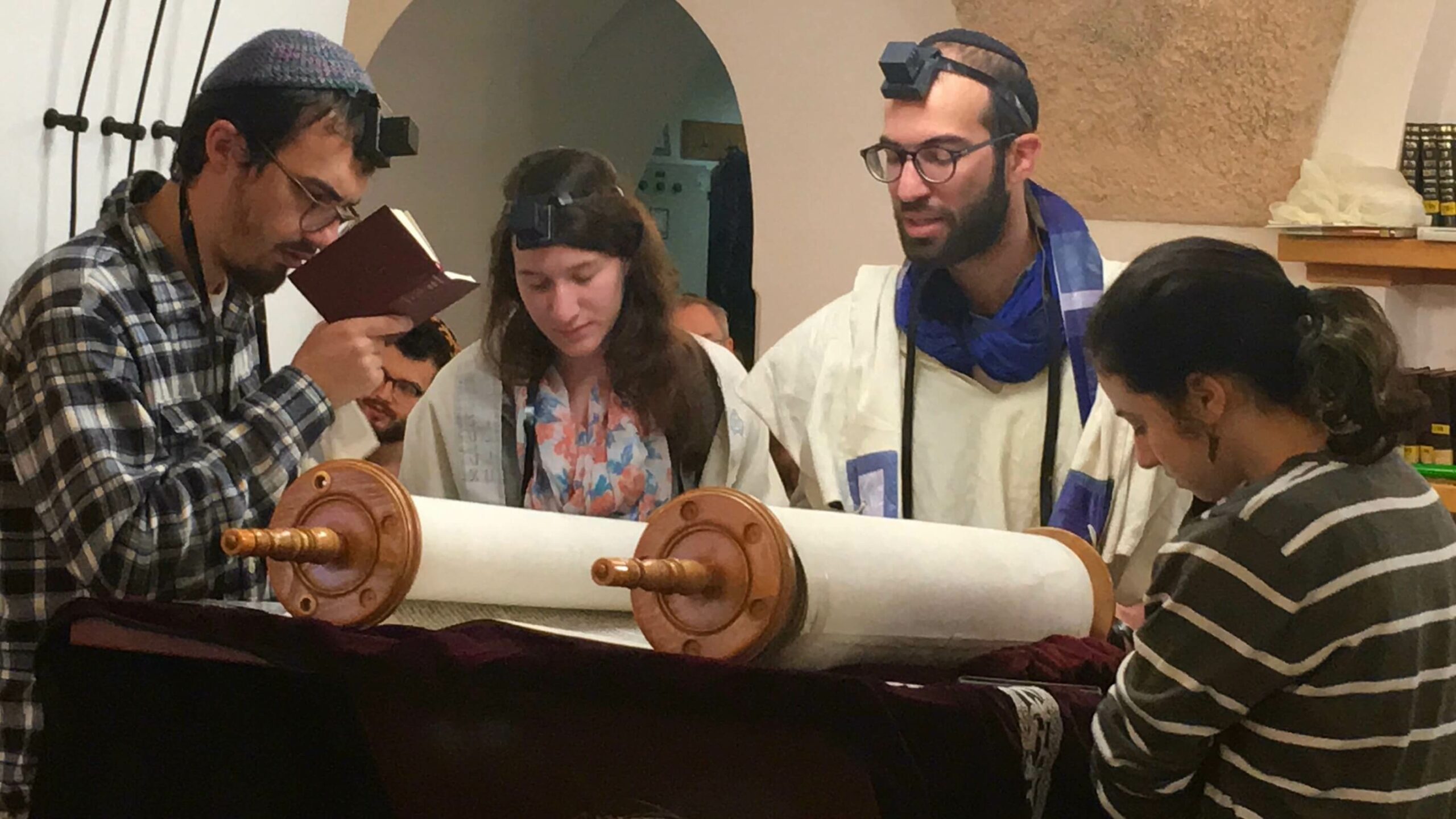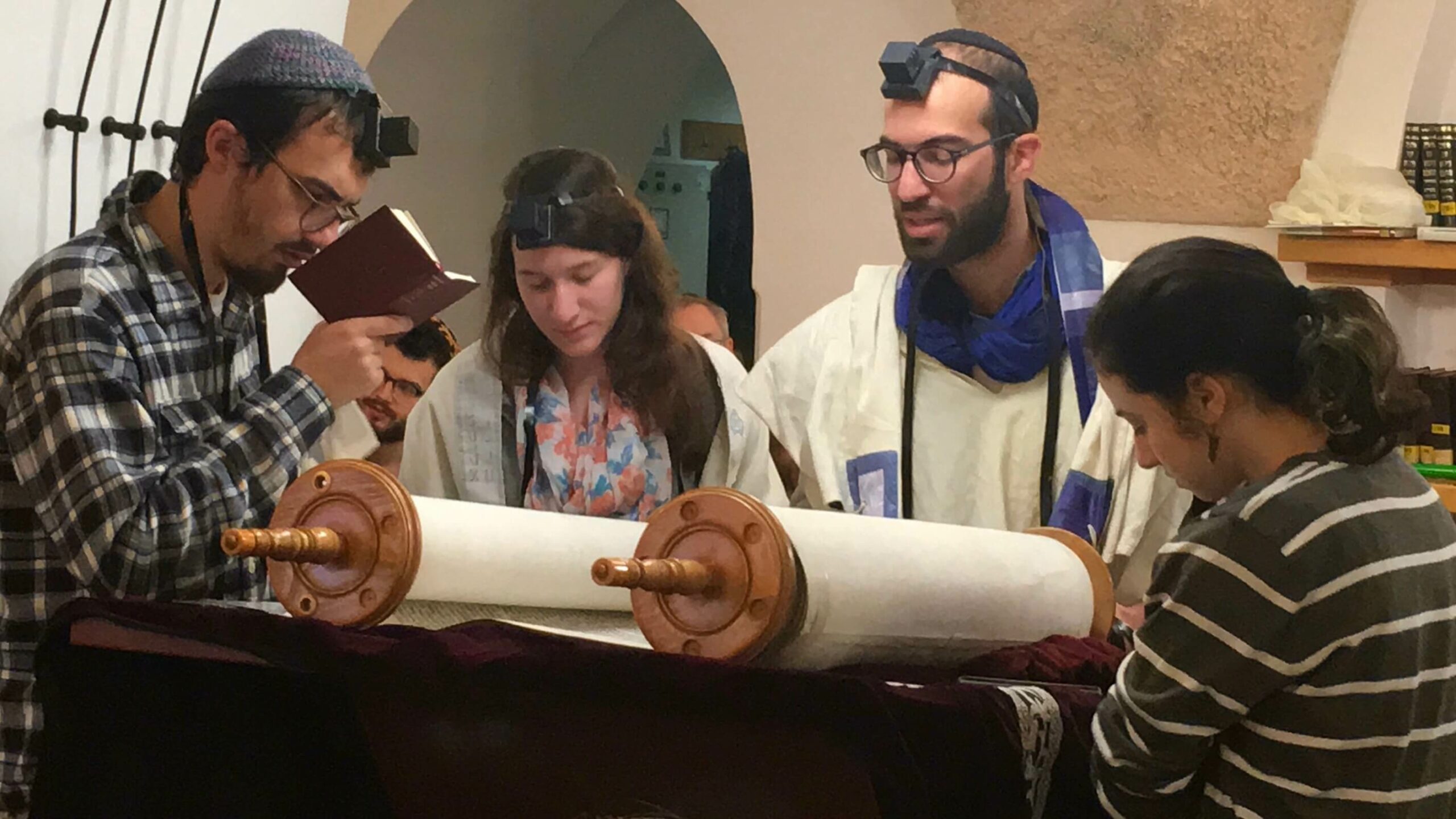

TORAH SPARKS (print friendly version)
Yom Kippur 5779| Part 1
September 19, 2018 | 10 Tishrei 5779
The following is drawn from learning done during the Conservative Yeshiva’s 4-day Pre-Yom Kippur minimester.
Forgiveness: Stories from Tractate Yoma
Ilana Kurshan, Conservative Yeshiva Faculty
Before Yom Kippur we are obligated to ask forgiveness from all those we have offended, and to grant forgiveness to those who seek it from us. To some extent Yom Kippur is an arbitrary date for requesting and granting absolution; the wrong may have been committed several months ago and nearly forgotten, or the wound may still be painfully raw. In one of the stories we considered, Rav, the earliest Babylonian sage, seeks to appease a butcher who has wronged him on the eve of Yom Kippur, and the consequences are disastrous: the butcher is unable to forgive him, and ends up dying as a result. And so Rav, who was unable to recognize that his timing was off, ends up, like the butcher, with blood on his hands.
Of course, asking forgiveness is not easy. One needs to admit that one recognizes that one has done something wrong, rather than pretending that it never happened. And one needs to be able to make oneself low—as low as a pile of garbage on which dirty water might be spilled—perhaps so low that we lose our dignity and our powers of speech. Rabbi Yirmiya, who offends Rabbi Abba, sits on the threshold of Rabbi Abba’s house to ask forgiveness. He waits there until eventually Rabbi Abba’s servant pours dirty water on his head. I am not sure why Rabbi Yirmiya was stuck on the threshold, unable to enter Rabbi Abba’s house, or why Rabbi Abba does not come out and meet him halfway. Perhaps Rabbi Abba does not know how to be פותח שער לדופקים בתשובה—to open the gate to those who coming knocking in repentance—and so he leaves his guest out in the cold. “And I shall throw upon you pure waters, and you shall become pure” says Ezekiel 36:25 in a line we recite throughout the Yom Kippur liturgy. But Rabbi Yirmiya instead has dirty water poured upon him, which serves to even the scales so that both he and Rabbi Abba are in need of forgiveness. It would be unfortunate if the only way to humble ourselves enough to be able to ask forgiveness were to engineer a situation in which we, too, are offended by the one we have hurt. This is not the sort of reconciliation and healing we’d like to imagine in our world.
And what is that sort of healed cosmos our prophets envision? One in which we don’t mind if someone else doesn’t start their lecture over again when we walk in late? A story about Rav and Rabbi Chanina seems to get at the heart of what it means to ask forgiveness. Rav keeps starting his lecture anew each time another student walks in late, until Rabbi Chanina walks in and he can’t bear to start over again. Are we to blame him? Or do we instead cast the blame on Rabbi Chanina, who stubbornly refused to grant absolution? As this story underscores, timing is very important when it comes to Teshuva. A person can be too late, like Rabbi Chanina; but a person can also be too early, like Rav with the butcher. The readiness is all.
If it is from Rabbi Chanina that we learn a lesson about timing, then it is from Rav that we learn a lesson about starting over. Rav begins his shiur four times before refusing to start over again. Yet as the subsequent halakhic passage teaches us, the Vidui must be recited five times over the course of Yom Kippur, lest a person inadvertently sin after reciting this confessional prayer. We say the Vidui again and again because Yom Kippur is about starting over. It is about wiping the slate clean—hopefully with pure and not dirty water—and starting afresh. Sins between human beings must be atoned for in their proper time, as we have seen; and calculating that proper time requires sensitivity and discernment. Sins between man and God, on the other hand, are atoned for on one particular day of the year, a day that is described as an Et Ratzon, a time of favor, when the gates of repentance swing open on the hinges each time we supplicate God in prayer.
There is something triumphant and even ecstatic about Yom Kippur, this day on which we are guaranteed that God will pardon us so long as we sincerely atone for our wrongdoing. Buoyant with the awareness that we will be pardoned and will have our slate wiped clean, we glide up and down Emek Refaim likes angels, greeting Kol Ba-ei Olam – for it truly feels like the whole world is out there with us. Have we done the hard work of granting and seeking forgiveness from all the other people in our lives? No matter –the deadline is upon us– we have handed in our papers for God to grade, and now it is time to celebrate after a month of hard work. Hopefully we will all receive stellar marks, and we will be inscribed for a year of blessing. Hopefully we enter the new year with our hearts open and with the desire to do right by one another. Inevitably we will offend and we will be offended. But at this Et Ratzon, this time of divine favor, we pray that we will learn to find the appropriate moment to approach those we have wronged and, before it is too late, to grant ourselves and others the gift of starting over.
The Scape Goat’s Role in Atoning
Rabbi Mordechai Silverstein, Conservative Yeshiva Faculty
Yom Kippur had its own very unique rites in Temple times. The ritual of the Seir L’Azazel – the Scape Goat – was perhaps the most unusual among them. Two goats were brought before the High Priest where lots were drawn on them. One of these goats was selected for sacrifice to God as a sin offering while the other was to be sent to Azazel, carrying away the community’s sins. While the exact meaning of Azazel eludes us, it seems to have had its roots in a mythic representation of either a place or demon which acted as a repository for sin. This “scape goat” was meant somehow to appease these forces. Together the offering of these goats offered expiation from sin. The idea of transporting or transferring the nation’s sin to some external force may have had significance for Judaism in its early history but as the tradition developed the significance of this ritual was transformed.
The earliest extant inkling of this change is found in the writings of Philo, a Hellenistic Jew from Alexandria, who lived around the turn of the Common Era: “The male goat selected by lot for God must be sacrificed, but the other was to be sent out into and inaccessible desolate place carrying on himself the curses of those who had committed offenses, but who were purified by changes for the better and who have washed themselves from their old lawlessness with a new sense of loyalty to the law.” Philo viewed this ritual as a symbolic means for enacting a transformation in the behavior of the worshiper.
Philo was not a rabbinic Jew but his reinterpretation of this rite may offer us a window into the legal rereading of this ritual found later in the Mishnah. The Mishnah, as a legal text (Eretz Yisrael end of the 2nd century), generally does not delve into the depths of the souls of the worshiper. Still, in its reworking of the ritual one can see subtle changes in how this ritual was understood. For example, there seems to be an underlying philosophical change in perspective alluded to in the details of the following rabbinic rereading of this ritual: “THE TWO HE-GOATS OF THE DAY OF ATONEMENT ARE REQUIRED TO BE ALIKE IN APPEARANCE, IN SIZE, IN VALUE, TO HAVE BEEN BOUGHT AT THE SAME TIME. BUT EVEN IF THEY ARE NOT ALIKE THEY ARE VALID. IF ONE WAS BOUGHT ONE DAY AND THE OTHER THE FOLLOWING DAY, THEY ARE VALID….” (Mishnah Yoma 6:1) The Mishnah goes out of its way to stress the symmetry of the two goats, that both sides of the ceremony are normative and regulated.
This symmetry is meant to communicate that both goats, both sides of the ritual, have their source in God – “mercy” as represented by the goat offered to God and “justice” as represented by the scape goat. In a sense, the Mishnah has turned the significance of this ritual on its head. It is no longer the mythic ceremony of the Torah, where a force outside of God is placated, but one universe under God, where we must struggle to find the proper balance between opposing, but ultimately divine, forces and values.
Waze It to The Gate of Heaven
Vered Hollander-Goldfarb, Conservative Yeshiva Faculty
As a child, the Neila prayer fascinated me. I imagined those gates closing as the sun set on Yom Kippur, while the synagogue filled with people trying to get in just one more prayer, maybe the one that would make the difference. I also understood that there was no point in asking for the geographic location of those gates. In relation to God, all Jews are equally distant (or close), wherever they are located. Forget geography.
But it was not always that way. The physical location of the Gate of Heaven was apparently a point of contention in the Torah. The first time that humans tried to reach the gate of Heavens seems to be as they build a tower whose top will reach Heaven. Presumably, that would have given the people of Babylon a direct access to God. And God, in Bereshit (Genesis) 11, did not appreciate the attempt. Was this giving humans too much faith in themselves? A sense that they control God? Perhaps. So God mixed up (balal) their unified language (a distinct human trait) and out came a babbling mass of people, and the need for a dictionary.
But in Akkadian, the ancient language spoken in Babylon (located between the Tigris and Euphrates Rivers) Babel had a different meaning. Bab means ‘gate’ (similar to the tractate Baba Kama etc – meaning the First Gate). El/ilani meant god/gods. Babylonians knew where they lived: at God’s Gate (and had a nice Ziggurat to show for it.)
Presumably, this was well known around the Ancient Near East (remember that Abraham also spent some time in the region; people and news traveled.) The Torah seems to disagree with this identification, as it did with most things connected to polytheism. The Torah puts the identification of a different location, on the other side of the Fertile Crescent, in the mouth of Jacob, who is fleeing his brother and has a dream on the way. After seeing the ladder with angels of God ascending and descending from it, Jacob declares: ‘This is the House of God, and this is the Gate of Heaven!’ (Bereshit 28:17). He aptly names the place Beit El (House of God). It functioned as a holy site at least until the 7th century BCE, and Jews lived there until long after that.
Later generations of rabbis faced a dilemma. They wanted to move the Gate of Heaven slightly to the south, to Jerusalem, that had become the undisputed center of Jewish worship in the Temple. How do you move Heavenly Gates? A Midrash developed (Bereshit Rabba 69) that seems to have solve the problem. As knows any person who has leaned a ladder, it is not exactly at a 900 angle to the ground. “Said Rabbi Yehudah son of Rabbi Simon: This ladder stands in the Temple [on the ground in Jerusalem] and is leaning all the way to Beit El.”
May our prayers open the Gates of Heaven.





